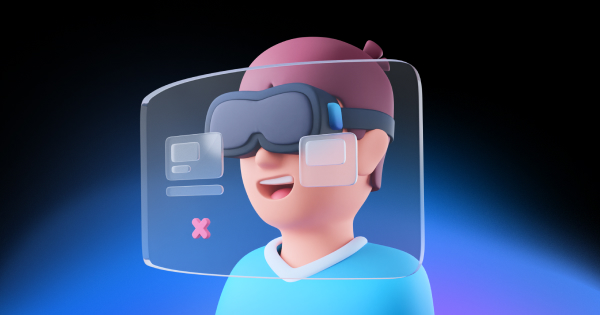Why Brand Performance Integration Fails: 7 Critical Mistakes We See Every Week

Three months ago, I walked into what should have been a celebration meeting.
Our client — a fast-growing D2C skincare brand — had just completed their “integrated brand and performance strategy.” On paper, it was textbook perfect. Brand campaigns were running on YouTube and Connected TV, building awareness and consideration. Performance campaigns were harvesting demand on Google and Meta, driving immediate conversions. The CMO was practically glowing as she showed me the deck.
Then I asked the question that shattered the illusion: “What’s the incremental impact of your brand spend on performance campaign efficiency?”
Silence. Uncomfortable shuffling. Finally: “Well, we’re tracking both separately…”
That’s when I realised we were looking at two parallel universes, not an integrated strategy. The brand team was celebrating reach and frequency. The performance team was optimising for ROAS. Neither had any idea what the other was actually achieving. Worse, they were probably cannibalising each other’s results.
This wasn’t an outlier. As Head of Production at Performiq.io, I see this exact scenario play out every single week. Companies spend millions trying to integrate brand and performance, only to create expensive, siloed theatre that delivers neither reach nor revenue effectively.
After working with 200+ brands over the past five years, I’ve identified the seven critical mistakes that doom these integration efforts from the start. More importantly, I’ll show you the uncomfortable truths we’ve learned about what actually works.
Mistake #1: The Mythical Funnel Delusion
The Fantasy: Brand awareness at the top creates demand that performance campaigns harvest at the bottom. It’s a beautiful, linear funnel where everyone has a clearly defined role.
The Reality: Modern customer journeys aren’t funnels; they’re chaotic pinball machines.
Last quarter, we tracked 2,847 customer journeys for a premium luggage brand using both traditional attribution and our new journey mapping methodology. The results were sobering:
- Only 12% followed the “classic” funnel (awareness → consideration → purchase)
- 34% discovered the brand through performance ads, not brand campaigns
- 28% saw brand content after already being in-market and comparing options
- 26% bounced between brand and performance touchpoints 3–7 times before converting

The expensive mistake: The client had been allocating 60% of their £2.1M annual budget to “top-funnel brand building” based on the assumption that brand always comes first. Our analysis revealed that 73% of their brand impressions were actually reaching people who were already aware of the brand and actively shopping the category.
What we learned: Modern consumers don’t move through neat stages. They spiral through moments of curiosity, comparison, validation, and action — often simultaneously across multiple brands. Your integration strategy needs to account for this chaos, not fight against it.
Mistake #2: The Platform Apartheid System
The Fantasy: Brand runs on “premium” channels (YouTube, Connected TV, Meta video), while performance lives in “direct response” channels (Google Search, Meta conversions). Never the twain shall meet.
The Reality: Every platform can drive both brand and performance outcomes — if you let them.
We recently audited a fintech client’s £800k quarterly spend. They were running brand video campaigns on YouTube whilst simultaneously running performance campaigns on Google Search for the exact same audience. The kicker? Their YouTube campaigns had a 4.7x higher view-through conversion rate than their Search campaigns, but they weren’t measuring or optimising for it.

The data that changed everything:
- YouTube brand campaigns: £2.40 cost per acquisition (when properly measured)
- Google Search campaigns: £11.30 cost per acquisition
- Meta brand video: 34% higher lifetime value customers vs. performance ads
Why this happens: Platform apartheid isn’t just organisational — it’s psychological. Brand teams think performance metrics are “dirty.” Performance teams think brand metrics are “fluffy.” So they create artificial barriers that prevent platforms from doing what they do best.
The uncomfortable truth: TikTok can drive qualified B2B leads. LinkedIn can build emotional brand connection. Google Search can create brand preference, not just harvest demand. But only if you measure and optimise for both outcomes simultaneously.
Mistake #3: The Time Horizon Trap
The Fantasy: Brand builds long-term value, performance drives short-term results. They work on completely different timescales, so measure them differently.
The Reality: Both brand and performance effects happen across multiple time horizons simultaneously. Measuring them in isolation creates a false trade-off.
Here’s what we discovered with a subscription meal kit service over 18 months:

Week 1–4 after brand campaign launch:
- Performance campaigns saw 23% improvement in conversion rates
- Cost per acquisition dropped from £47 to £36
- Customer quality scores increased by 18%
Week 12–24:
- Organic search volume increased 67%
- Performance campaign impression share grew 34% (same budgets)
- Customer lifetime value increased £89 per cohort
The expensive realisation: They’d been measuring brand success at 6-month intervals and performance success daily. This created a false narrative that brand was “expensive” and performance was “efficient.” In reality, brand investment was making performance campaigns dramatically more effective within weeks, not months.
What changed: We implemented unified measurement windows — tracking both immediate performance impact and long-term brand building across the same time horizons. Suddenly, the C-suite could see brand and performance as complementary investments, not competing priorities.
Mistake #4: The Creative Segregation Fallacy
The Fantasy: Brand creative should be “beautiful” and emotional. Performance creative should be “ugly” and conversion-focused. Different teams, different briefs, different standards.
The Reality: The best performing ads are often the most brand-coherent ones — and the strongest brand ads are frequently the most conversion-efficient.
We A/B tested this hypothesis with an outdoor gear brand, creating two creative approaches for the same campaign:
“Traditional” Performance Creative:
- Product shots with discount callouts
- Generic lifestyle imagery
- Direct response copy (“Buy Now! 30% Off!”)
- Result: 2.1% conversion rate, £42 CPA
Brand-Coherent Performance Creative:
- Same products in authentic brand environments
- Real customer stories and usage contexts
- Brand-consistent tone and messaging
- Result: 3.8% conversion rate, £23 CPA, 47% higher retention rates
The kicker: The “brand” creative was more performance-efficient, and customers acquired through brand-coherent ads had 63% higher lifetime value.
Why segregation fails: When creative teams work in silos, performance ads feel disconnected from the brand experience. Customers notice this inconsistency — consciously or subconsciously — and trust erodes. Conversely, when brand campaigns have no clear path to action, they waste highly engaged moments.
The solution: Single creative teams working to dual briefs. Every piece of creative should advance both brand perception and conversion probability. No exceptions.
Mistake #5: The Budget Battle Royale

The Fantasy: Optimise brand and performance budgets separately to maximise their individual efficiency, then combine the results.
The Reality: Brand and performance campaigns have profound effects on each other’s efficiency. Optimising them in isolation leads to suboptimal total outcomes.
This mistake nearly cost us a £4.2M automotive client. Their approach was mathematically logical:
- Brand budget: Optimise for cost per reach point
- Performance budget: Optimise for cost per conversion
- Total optimisation: The sum of two optimised parts
What we discovered through econometric modelling:
Scenario A (Client’s approach):
- Brand: £1.8M budget → 45M reach, £40 cost per thousand
- Performance: £2.4M budget → 3,200 conversions, £750 CPA
- Total efficiency: Appeared optimal by individual metrics
Scenario B (Integrated optimisation):
- Brand: £2.1M budget → 38M reach, £55 cost per thousand
- Performance: £2.1M budget → 4,100 conversions, £512 CPA
- Total efficiency: 28% more conversions despite “worse” individual metrics
The revelation: Brand campaigns had been creating a 34% efficiency boost for performance campaigns, but only when brand spend exceeded a minimum threshold. Below that threshold, performance campaigns were essentially fighting against low brand awareness.
The hard truth: There’s no such thing as optimal brand budget or optimal performance budget. There’s only optimal total budget allocation across both objectives simultaneously.
Mistake #6: The Data Divorce
The Fantasy: Brand teams use brand measurement tools (brand lift studies, attention metrics), performance teams use performance tools (attribution, conversion tracking). Each specialises in their domain.
The Reality: Separate measurement creates separate realities. Teams end up optimising for different definitions of success.
A SaaS client exemplified this perfectly. After six months of “integrated campaigns,” we discovered:
Brand team’s reality:
- 67% increase in aided awareness
- 23-point improvement in brand perception
- 340% increase in branded search volume
Performance team’s reality:
- 12% decline in conversion rates
- 18% increase in cost per acquisition
- 28% drop in campaign efficiency scores
Same campaigns. Completely different stories.
The breakthrough came when we implemented unified measurement:
- Brand lift wasn’t being measured against conversion behaviour
- Conversion tracking wasn’t accounting for view-through brand impact
- Attribution models were missing the assisted conversions from brand exposure
The integrated picture:
- Brand campaigns were driving 41% of performance campaign conversions (previously uncredited)
- Performance campaigns were converting 2.3x more efficiently among brand-exposed audiences
- Total incremental revenue: £1.8M more than either team realised
The uncomfortable requirement: Marketing teams need to learn each other’s measurement languages. Brand managers need to understand conversion attribution. Performance managers need to grasp brand lift methodology. It’s not optional anymore.
Mistake #7: The Organisational Berlin Wall
The Fantasy: Keep brand and performance teams separate but coordinated. Clear ownership, clear accountability, clean reporting lines.
The Reality: Organisational structure determines measurement structure, which determines optimisation behaviour. Separate teams will always optimise for separate outcomes, regardless of strategic alignment.
This isn’t a soft skills problem — it’s an incentive design problem. We’ve seen it destroy integration efforts at companies with the best intentions:
The case study: A £180M retail brand with best-in-class teams:
- Brand team: Bonused on awareness, consideration, and brand health metrics
- Performance team: Bonused on ROAS, CPA, and conversion volume
- Both teams: Genuinely committed to integration
The predictable result: When budget decisions got tight, each team fought for their metrics. Brand pushed for reach extension. Performance pushed for conversion optimisation. Integration became a secondary priority for both.
What worked: We helped them restructure around shared KPIs:
- Incremental revenue (measured through lift studies)
- Customer lifetime value (across all acquisition channels)
- Total marketing efficiency (brand + performance combined)
The organisational change: They created “Campaign Pods” — integrated teams with brand strategists, performance specialists, creative leads, and data analysts working on unified briefs toward shared objectives.
Results after 12 months:
- 43% improvement in total marketing efficiency
- 67% reduction in creative production costs (less duplication)
- 89% faster campaign iteration cycles
The hard truth: You can’t fix integration with better processes or tools. You fix it by aligning human incentives around unified outcomes.
The Uncomfortable Truths About What Actually Works

The brands winning at integration aren’t the ones with the biggest budgets or the fanciest tools. They’re the ones who’ve embraced three fundamental shifts:
From parallel optimisation to system optimisation: Stop optimising brand and performance separately. Start optimising the total marketing system for unified business outcomes.
From channel specialisation to outcome specialisation: Every channel, creative, and campaign should be evaluated for both brand and performance impact. No exceptions.
From measurement coordination to measurement integration: Shared dashboards aren’t enough. You need shared models that reveal how brand and performance effects interact and amplify each other.
The future belongs to marketers who can navigate complexity, not those who demand false simplicity. Brand-performance integration isn’t about finding the perfect balance — it’s about building marketing systems that are more effective than the sum of their parts.
That’s the challenge. That’s also the opportunity.
Ready to fix your integration challenges? At Performiq.io, we’ve guided 200+ brands through this transformation. The mistakes are predictable. The solutions are proven. The results speak for themselves.




